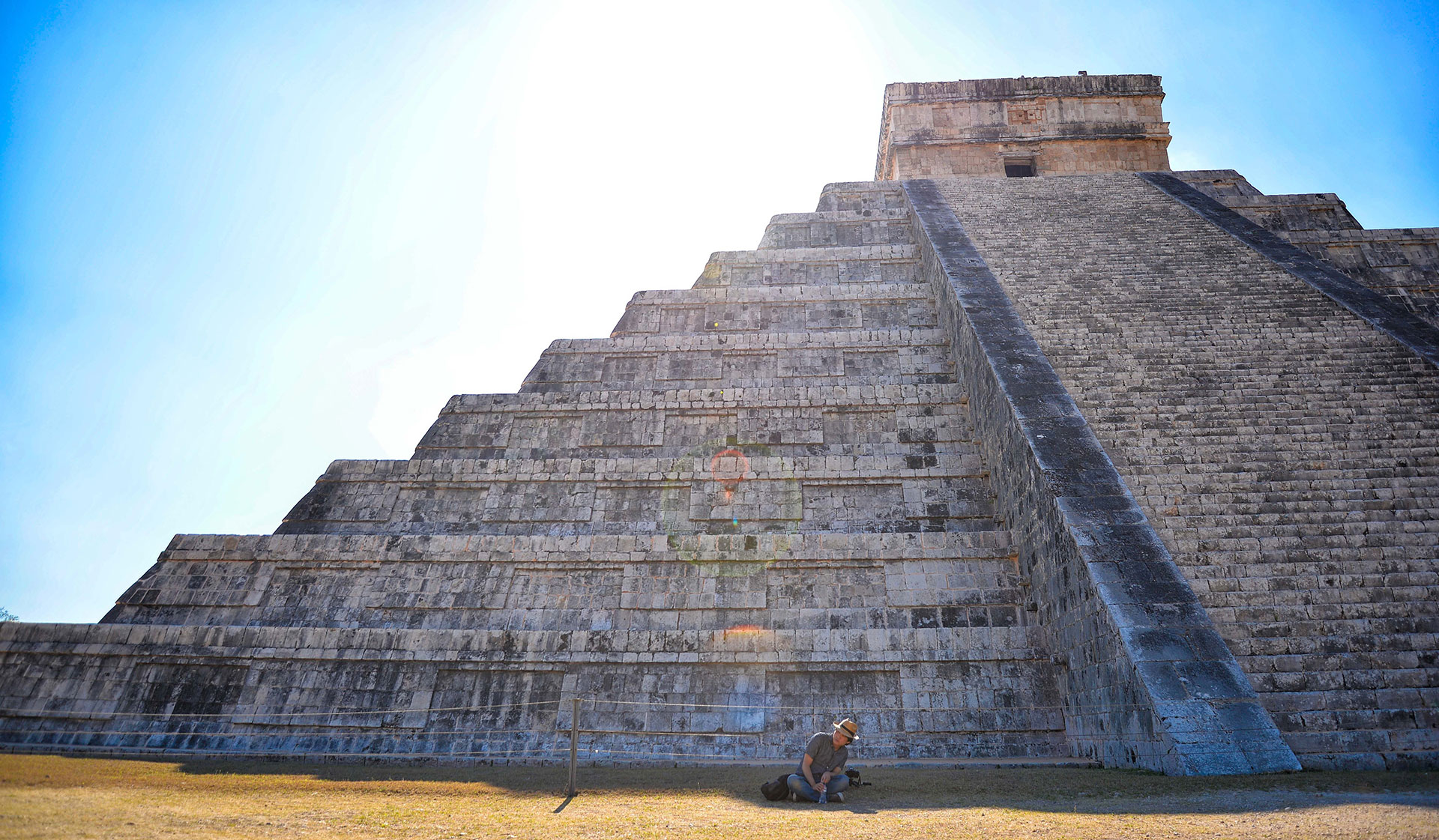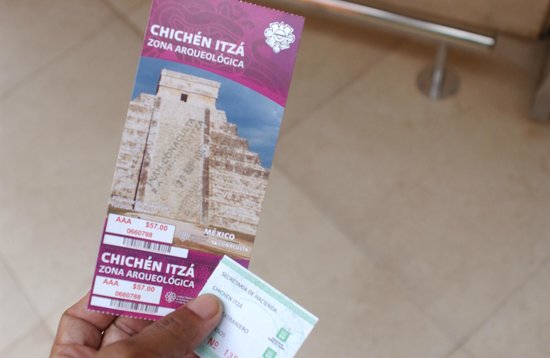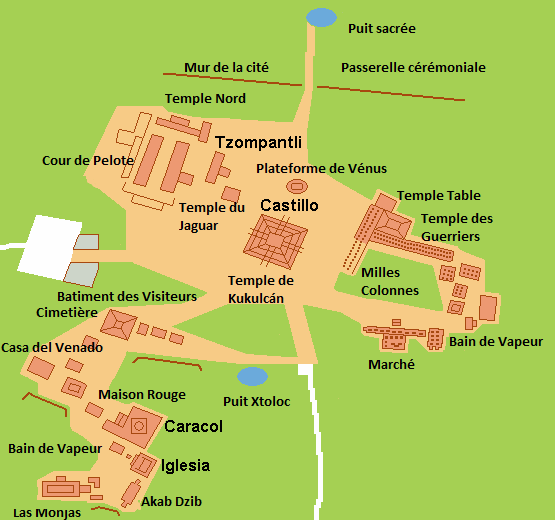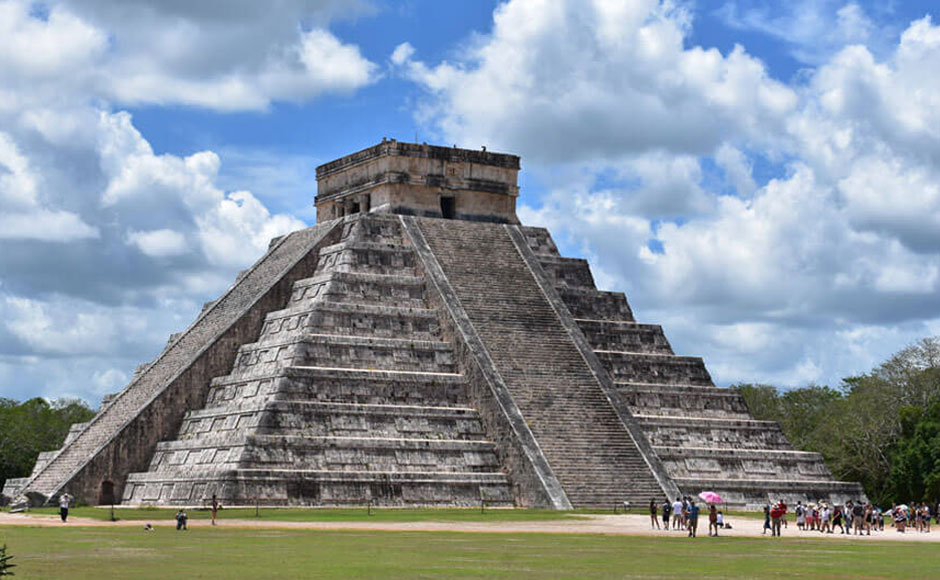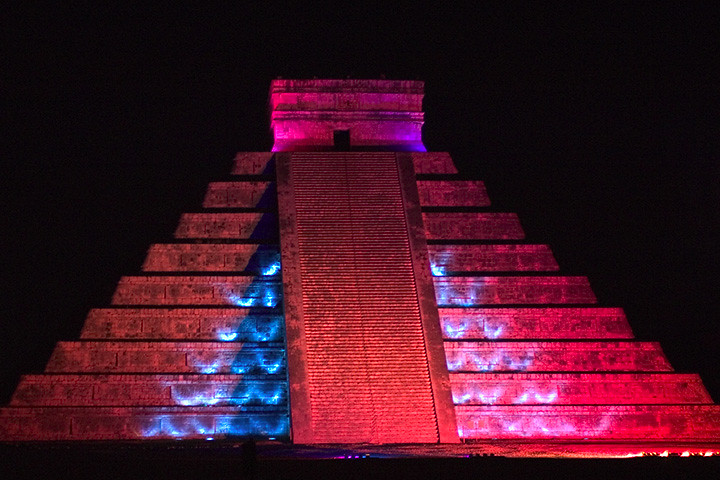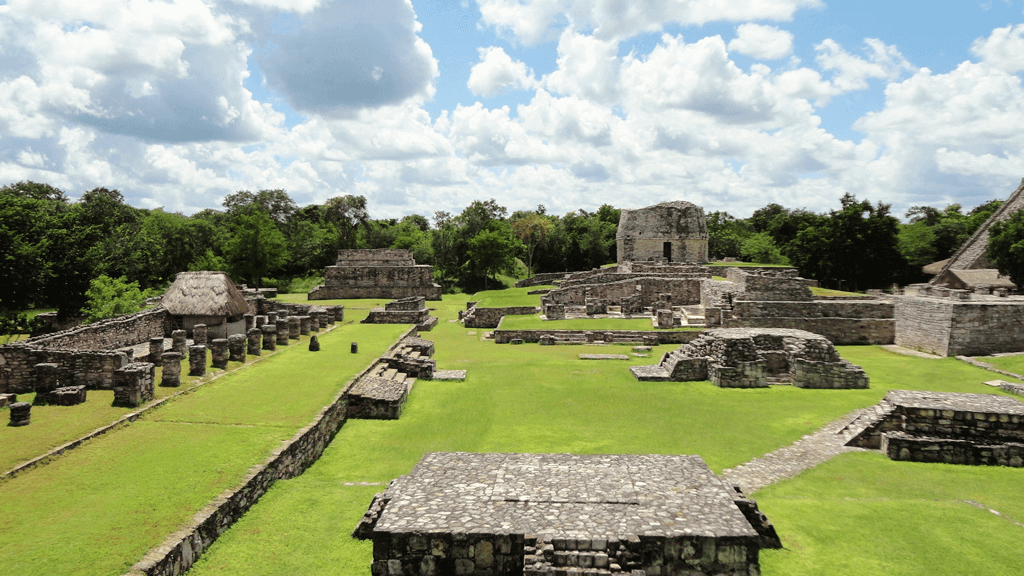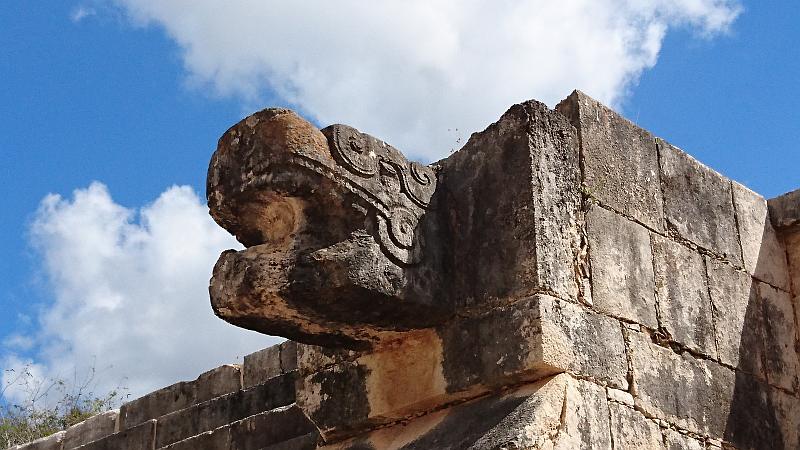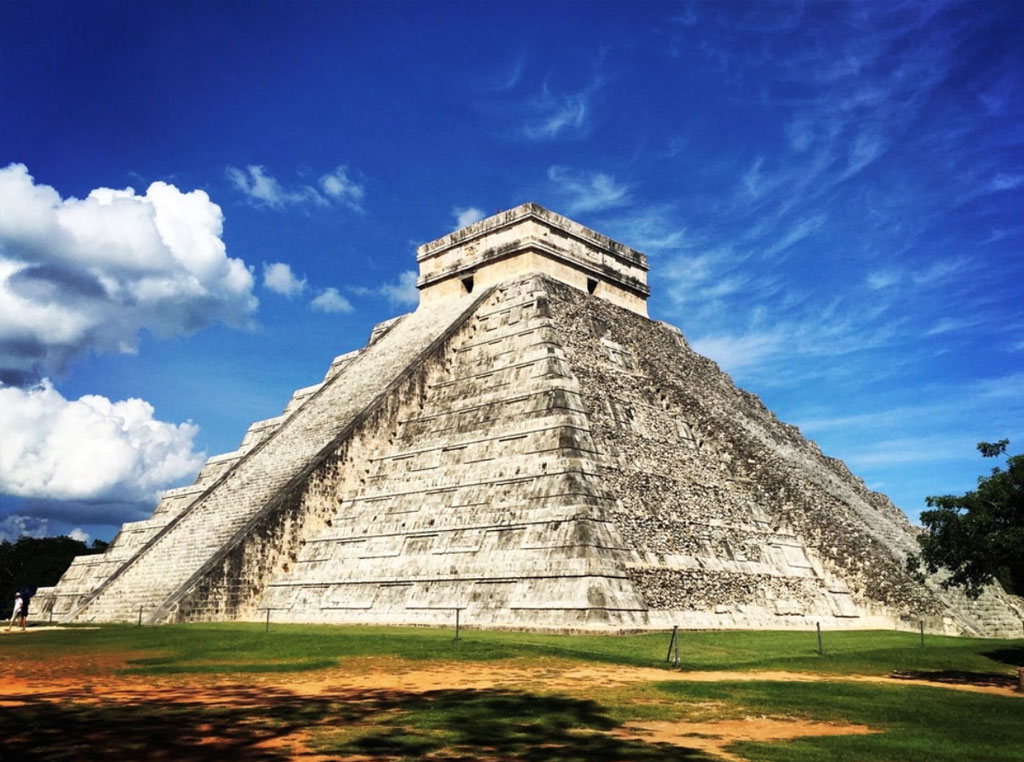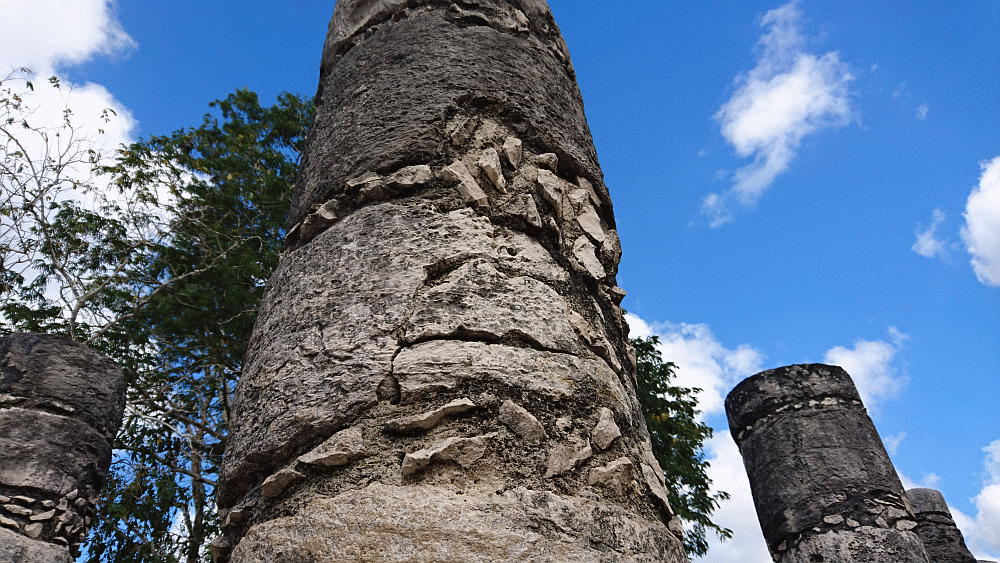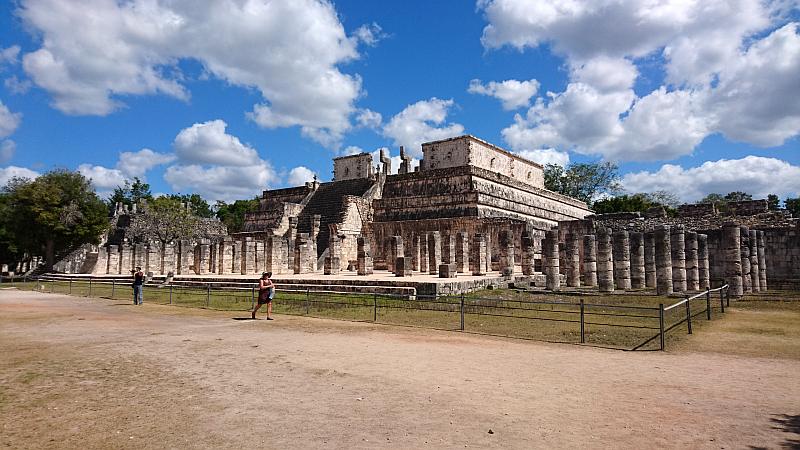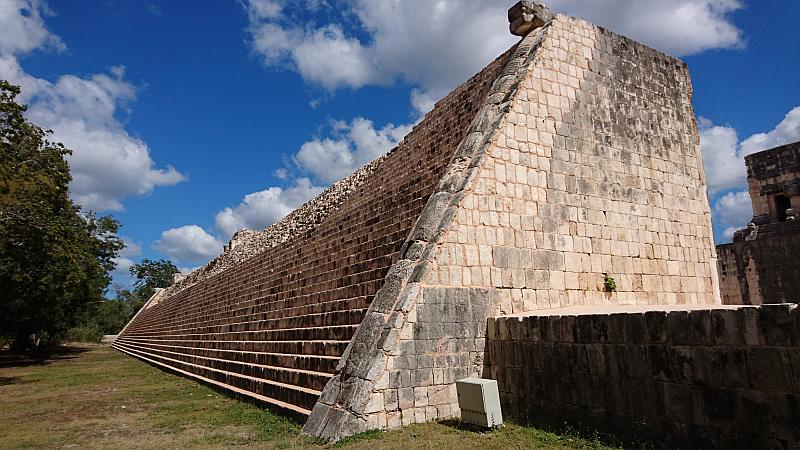About Chichen Itza
Chichen Itza is one of the main archaeological sites on the Yucatan Peninsula, in Mexico. It was and is still a sacred city and Mayan pilgrimage center founded by the Itza, the so-called water sorcerers, in the 5th century AD.
The name Chichen means "mouth of the well" and Itza refers to those who founded it, the Itzaes "witches of the water", around the year 435.
In Mayan society, the Halach Uinic or ruler of divine and hereditary character, lived in the palaces, along with priests and nobles who performed administrative tasks. Within the elite there were treasurers, scribes, architects and warriors, trades faithfully embodied in the murals, bas-reliefs and ceramics of the place.
For their part, farmers, weavers and artisans lived in surrounding villages and came to the city to go to the market and attend the religious celebrations that populated their precise calendars. The Mayans used two: one solar and the other ritual. The solar calendar, more exact than any other, was divided into 18 months of 20 days, plus 5 dark days, which were called uayeb (no name). The ritual calendar, or Tzolkin, was 260 days, 20 months of 13 days and was used for divination. The conjugation of the two calendars resulted in a period of 52 years, whose western equivalent could be the century.
Religion presided over the daily life of the Mayans, and their bulging pantheon of gods was related to the forces of nature. In fact, one of the most important activities of Chichén Itzá was its role as a sacred city and pilgrimage center, a function that it retained beyond its survival. The Sacred Cenote has witnessed this: it was a place of offerings of gold, jade, shell or wood, as well as human sacrifices.
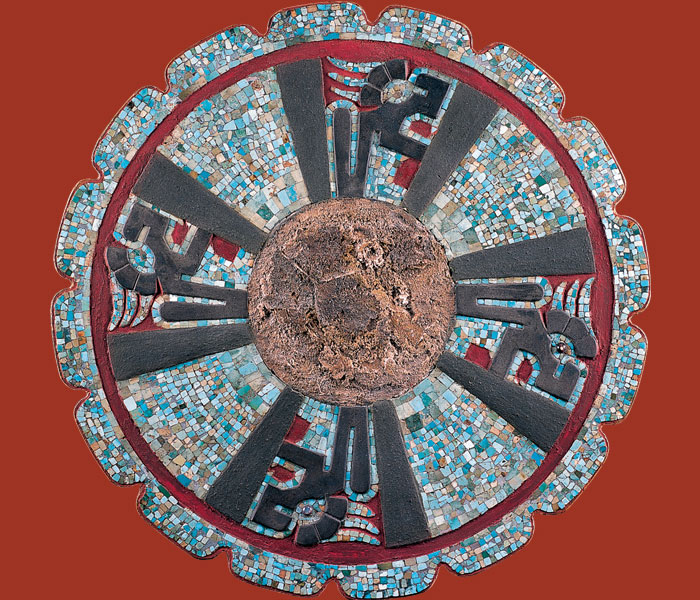
Info: Solar disk made of mosaic with turquoise and shell mounted on wood; it was part of the Castle offering. It refers to the symbolic importance of the hexadecagon. Anthropology National Museum. Photo: Jorge Pérez De Lara / Raíces

 ESPAÑOL
ESPAÑOL
 FRANCES
FRANCES
 PORTUGUES
PORTUGUES
 ITALIANO
ITALIANO
